Nikon D3000 Digital SLR Review
Nikon D3000 Digital SLR Review
Nikon's newest entry-level DSLR comes under the spotlight
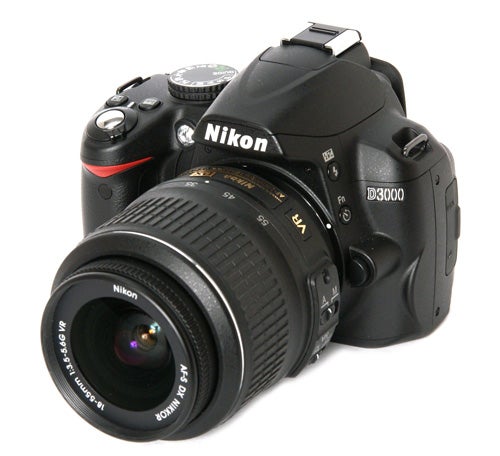
Sections
- Page 1 Nikon D3000 Digital SLR Review
- Page 2 Nikon D3000 Digital SLR Review
- Page 3 Nikon D3000 Digital SLR Review
- Page 4 Features Table Review
- Page 5 Test Shots – ISO Performance Review
- Page 6 Test Shots – Detail and Lens Performance Review
- Page 7 Test Shots – Exposure Evaluation Review
Verdict
Key Specifications
- Review Price: £420.00
The entry-level sector of the digital camera market is always a busy place. The manufacturers know that if they can get you to commit to their system over a rival, they’ve probably got you as a customer for life. By the time you’ve outgrown the entry-level model and are ready to upgrade, you’ll probably already have invested a small fortune in those highly profitable lenses and accessories, so you’ll most likely choose to stay with the same brand rather than replace your entire system. All of the main DSLR manufacturers produce sub-£450 models that compete to offer the best performance and specification at the best price.

Nikon’s newest entry-level model is the D3000, a basic 10.2-megapixel camera designed to be exceptionally easy to use, but nonetheless offering a taste of the build quality, performance and advanced creative features that make Nikon’s more sophisticated DSLRs so popular with professionals and enthusiasts. It will replace the successful D60 as the base model in Nikon’s DSLR range, and is currently on sale for around £420 complete with the excellent 18-55mm f/3.5-5.6 image stabilised kit lens. The D3000 shares much of its bodywork and some of its features with the next model up in the range, the D5000 that I reviewed last month. However it dispenses with the articulated monitor in favour of a fixed three-inch 230k screen, and also manages without live view and video recording.
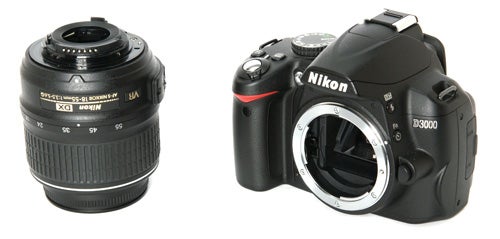
The D3000 is up against some strong competition, most notably from the Canon EOS 1000D, currently selling for around £385 with an 18-55mm non-IS lens. Other rivals include the Sony Alpha A230 (£340 kit), the Pentax K-m (£350), and even the Olympus E-420, available for around £290 with a single lens, or £375 in a twin-lens kit. Be comparison the D3000 is still quite expensive, although it’s only been on sale for a little over two months so that price will probably fall.
The D3000 makes a good first impression. It’s small for a DSLR, measuring 126 x 97 x 64 mm, although that’s actually slightly thicker than the EOS 1000D. It’s around 35g heavier than the Canon though, and certainly feels a lot more solid and well made. The body is made of plastic over a steel frame, but the panel joins are very tight fitting, and there’s no trace of the slight air of flimsiness that bedevils some entry-level models.
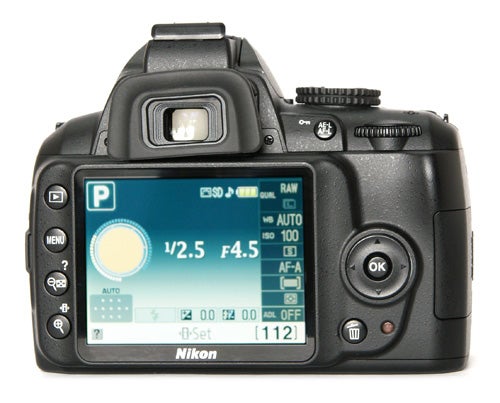
The D3000 has a very basic specification. It has what I suspect is the same Sony 10.2 megapixel CCD sensor used on the D60, the Sony A230 and a lot of other low and mid-range models from both companies for the past several years. It’s always been a good reliable sensor, and the D3000 marries it up with a fast Expeed processor and manages to coax a bit of extra speed out of it.
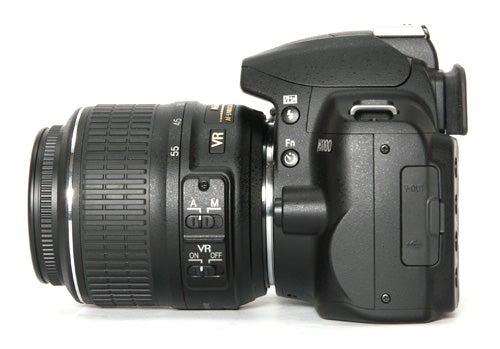
One weak point of the D60 was its weak three-sensor autofocus system. The D3000 however features the same excellent Multi-CAM 1000 11-point system found in the D5000, and based on the acclaimed AF system of the D3 and D300. The centre sensor is a more sensitive cross-type, and the addition of a good powerful AF assist lamp results in excellent low light performance.
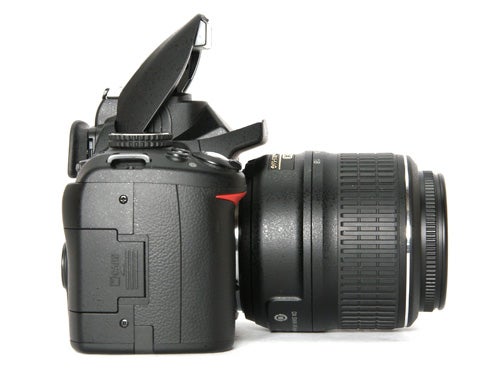
Other stock components include the shutter system and exposure meter, which are both the same as those of the D5000 and the D60. The shutter has an excellent speed range of 1/4000th of a second to 30 seconds, plus a B setting. The exposure meter uses a 420-pixel RGB sensor, and has proven to be reliable and accurate on its previous outings.
The D3000 is intended for beginners, and to this end it features a Guide setting on its main mode dial. This selects a special simplified menu system taking new users step by step through the process of basic camera setup, taking a photo and viewing options for the results, setting the camera up automatically according to the operation selected. This system is so ridiculously easy to use that’s it’s hard to imagine anyone having a problem with it. For more advanced operation the camera has the same easy-to-use graphical interface as the D5000, and the same informative monitor data display.
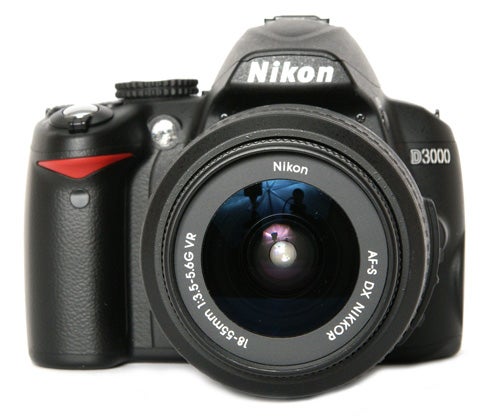
Once you’ve mastered the basics, the D3000 offers a reasonable level of creative control for more experimental photography. Main shooting options are all selected via the big mode dial, and include the usual P/A/S/M exposure options as well as six basic scene modes. The main menu system is somewhat simplified, but does include the Picture Control option, with six different tone presets that can be customised by the adjustment of contrast, saturation, hue and sharpness. Exposure compensation is +/- 5EV, and there are multiple flash modes to play with.
Entry-level digital SLRs are not exactly well known for their fast performance, but the D3000 inherits some of the high-speed power of its senior stablemates. In single shot mode it can sustain nearly two shots a second, with autofocus for every shot, while in continuous shooting mode it can manage a fairly respectable three frames a second. Unlike the EOS 1000D is can maintain the same shooting speed in Raw + JPEG mode, although the buffer does fill up after six shots, causing it to slow down a lot.
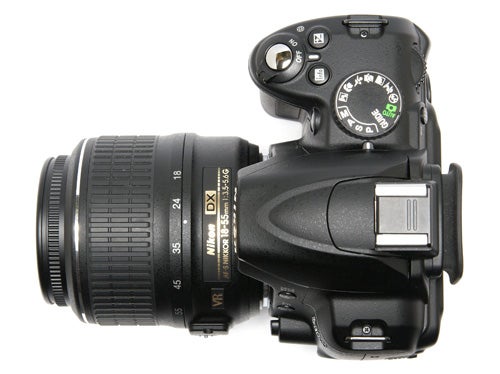
I’ve already mentioned the autofocus system, which unquestionably one of the best of any current entry-level camera. It is extremely fast and accurate, and works well in low light even when zoomed in. The AF assist lamp has a range of several meters, and the camera will focus reliably even in total darkness. The pop-up flash is also very good, with nice even frame coverage, a useful range of at least five metres and a recharge time of approximately five seconds.
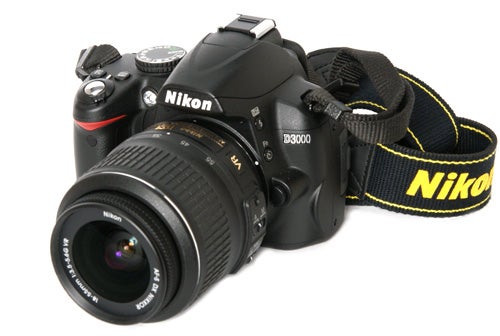
Image quality is, on the whole, excellent. Exposure metering is pretty much flawless and is able to cope with a wide and varied range of exposure conditions. The 18-55mm f3.5-5.6 AF-S VR kit lens is much better than most plastic-mount standard zoom lenses, with excellent edge-to-edge sharpness, good contrast and very little wide-angle distortion. It’s the same kit lens offered with the D60 and D5000.
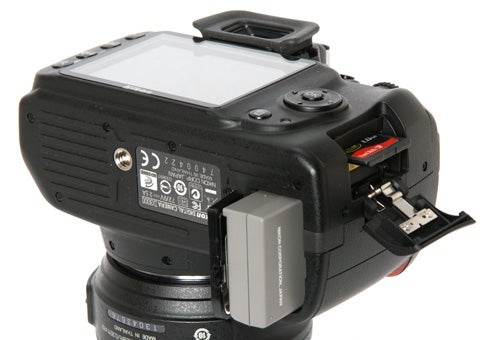
One problem that has plagued the Sony 10.2MP CCD sensor in every camera in which it has appeared, is image noise at higher ISO settings. The Nikon Expeed processor appears to be able to wring a little extra out of the sensor data though, because the high-ISO image quality is greatly improved over the slightly disappointing D60. Pictures are usable up to 800 ISO, and even the 1600 ISO samples aren’t a complete write-off.
”’Verdict”’
The Nikon D3000 is pretty much the perfect entry-level DSLR. It offers robust build quality, excellent handling, superior performance and good image quality, while leaving out superfluous gimmicks like video and live view. The Guide mode will help newcomers discover the basics of SLR photography, while a good range of manual options, as well as the excellent metering and AF systems, will provide plenty of scope for more experienced users.
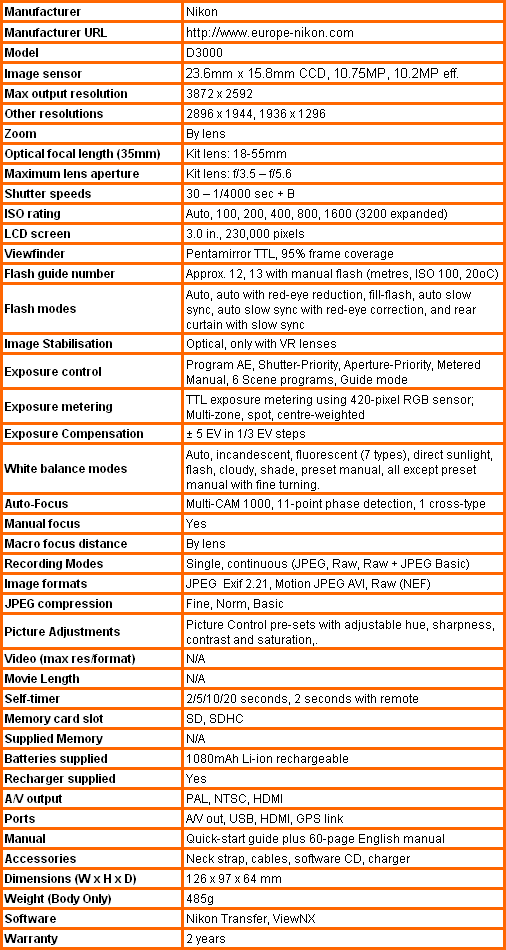
”A range of test shots are shown over the next few pages. Here, the full size images at the minimum and maximum ISO settings have been reduced for bandwidth purposes to let you see the full image, and a series of crops taken from original full resolution images at a range of ISO settings have been included in order for you to gain an appreciation of the overall quality. ”
—-
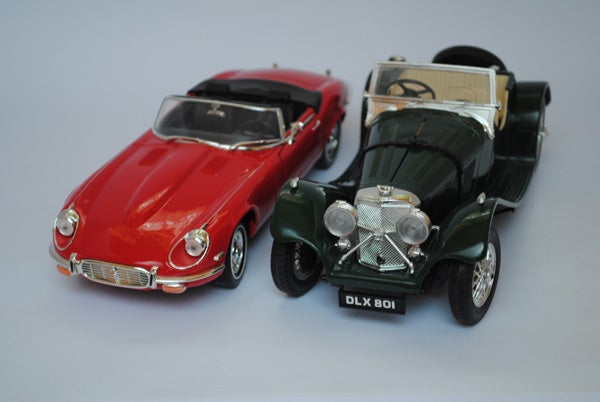
This is the full frame at 100 ISO.
—-
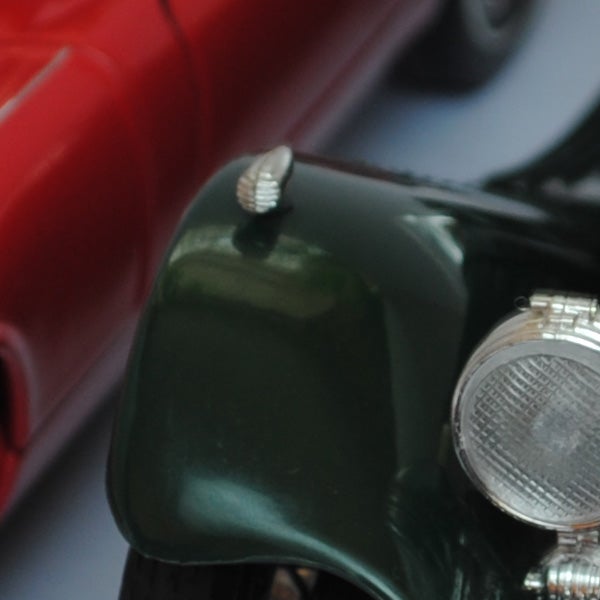
Image quality at 100 ISO is excellent, with no trace of the demon noise.
—-
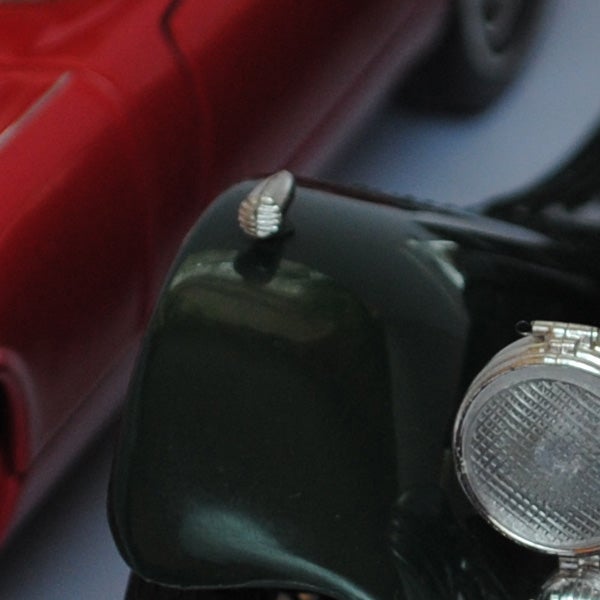
Not much difference at 200 ISO.
—-
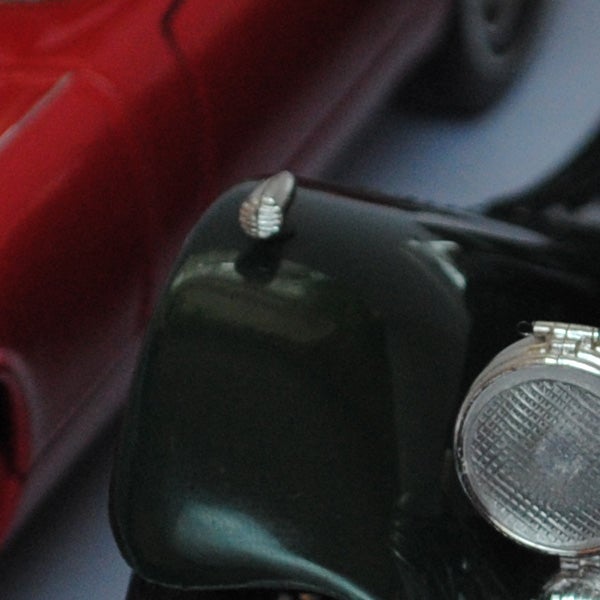
There is a trace of noise visible at 400 ISO, but overall quality is still very good.
—-
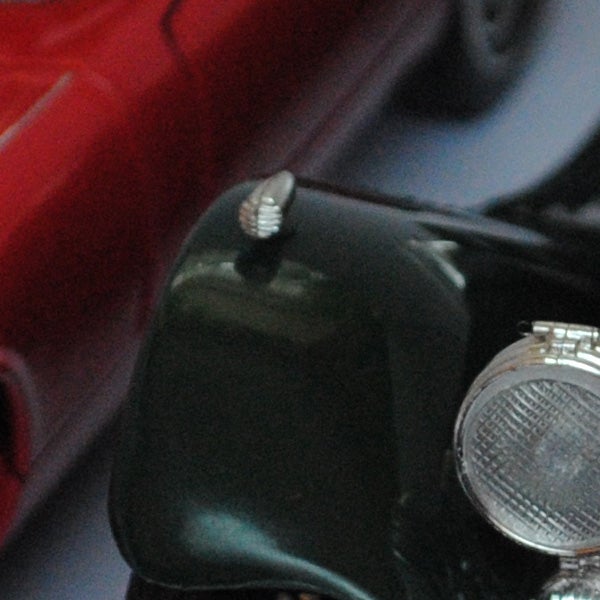
There is noise at 800 ISO but the overall image quality is still good.
—-
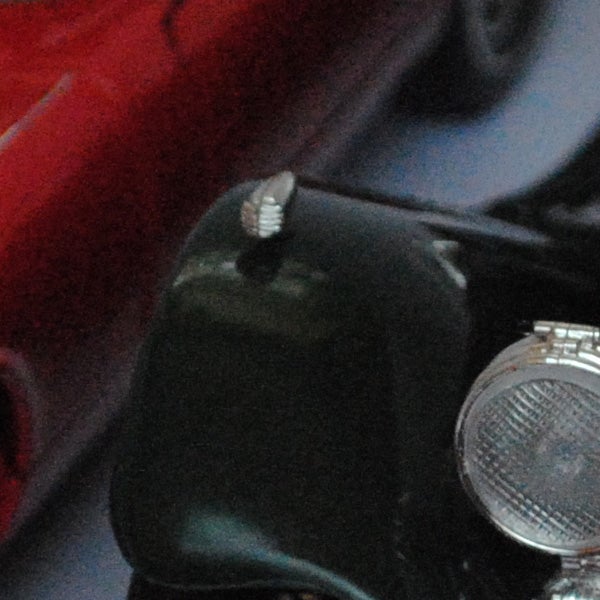
1600 ISO is looking a bit ropey, but would be OK at a smaill size.
—-
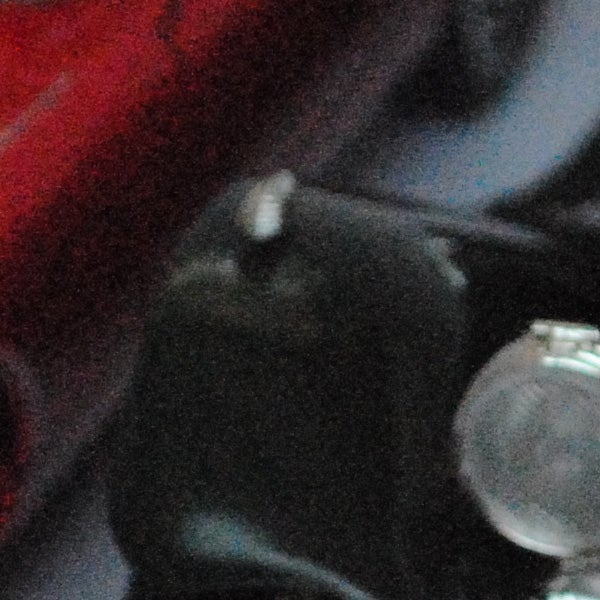
3200 ISO is pretty much unusable.
—-
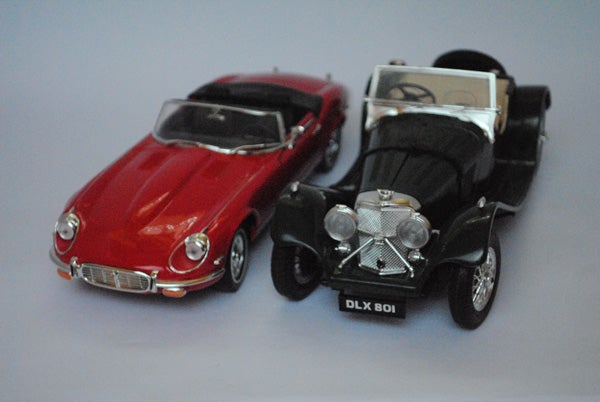
This is the full frame at 3200 ISO.
—-
”A range of general test shots are shown over the next two pages. In some cases, the full size image has been reduced for bandwidth purposes, and a crop taken from the original full resolution image has been placed below it to show the overall image quality. Some other pictures may be clicked to view the original full-size image. ”
—-

Here’s the usual test shot of Sidmouth sea front for you to compare with other similar cameras.
—-

The level of fine detail is on a par with other 10MP cameras.
—-
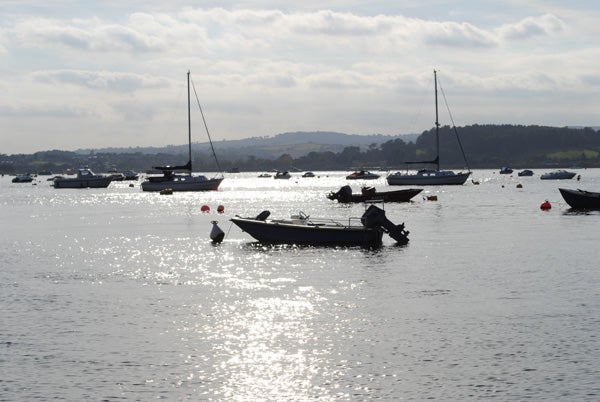
The metering system copes well with strong backlighting.
—-
”This page consists of resized images so that you can evaluate the overall exposure. ”
—-

—-

—-

—-

—-

